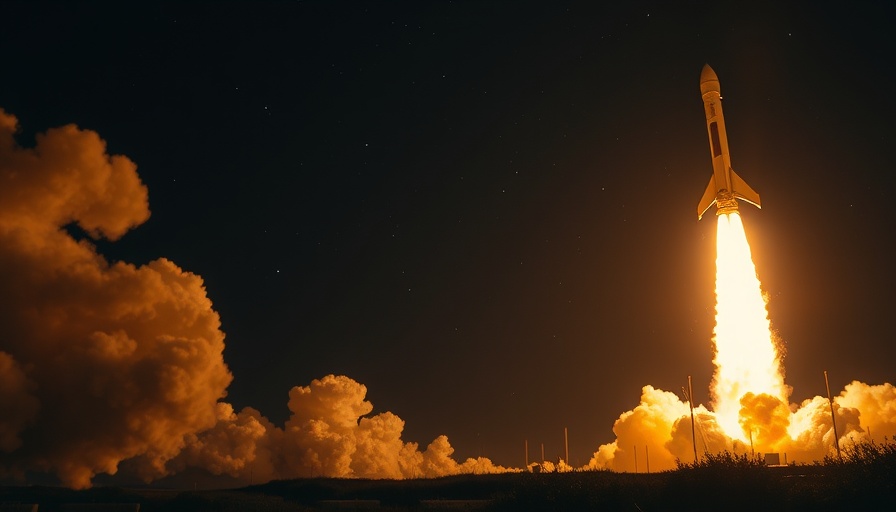
Private Company Prepares for Groundbreaking Second Moon Landing
On February 26, 2025, the Houston-based company Intuitive Machines launched its lunar lander Athena atop a SpaceX Falcon 9 rocket from NASA’s Kennedy Space Center in Florida. This mission aims to mark the company's second attempt to land on the moon after its historic landing last year with the lander known as Odie, which faced challenges but still delivered valuable data.
A New Approach to Lunar Exploration
Athena is set to touch down near the Mons Mouton plateau, closer to the moon's south pole than any previous landing attempt. This region is significant because it is believed to contain water ice, making it a focal point in the race to uncover lunar resources. The lander is equipped with advanced technology, including a drill capable of reaching depths of one meter and a robotic hoppin drone named Grace, designed for exploration in extreme lunar terrains.
Commercial Lunar Payload Services: Pioneering Innovations
The mission is part of NASA's Commercial Lunar Payload Services (CLPS) program, which seeks to revolutionize access to space by integrating private companies into lunar and deep-space missions. By collaborating with Intuitive Machines, NASA is paving the way for a new era of economic opportunity in space exploration, aiming to significantly reduce costs and increase the frequency of missions compared to traditional government-led initiatives.
The Excitement and Risks of Lunar Exploration
Even with advanced planning, lunar landings remain fraught with challenges. Intuitive Machines' CEO Trent Martin shared insights on the complexity of this mission, particularly as it involves navigating the intricate and treacherous terrain of the moon. There’s elevated pressure to achieve a safe landing, especially after the previous mission faced setbacks, including Odie tipping over upon touchdown.
Future of Space Technology: More Than Just Data Collection
The IM-2 mission isn't solely about reaching the lunar surface; it represents an opportunity to test innovative technologies that could play crucial roles in future astronaut missions. The integration of a lunar cellular network demo by Nokia, intended to relay data among vehicles on the lunar surface, reflects an expanding vision for operational support in future human expeditions to the moon.
Looking Ahead: What Comes After Success?
If successful, Athena will collect valuable scientific data that drives our understanding of lunar resources and helps establish a framework for sustained human presence in space. As noted by NASA’s Nicky Fox, this endeavor is a stepping stone for future missions, including potential crewed missions to Mars. The Artemis program, aiming to return humans to the moon by the end of the decade, will be closely linked to the data and technologies tested during these missions.
Conclusion: Why This Mission Matters
The exploration of the moon is not merely a scientific pursuit but a gateway to the broader universe. As the landscape of space exploration evolves, missions like Athena represent a crucial shift towards profitable and sustainable space endeavors. Whether you are a space enthusiast or someone curious about technological advancements, the outcomes of this lunar attempt will likely shape the future of space travel and exploration.
 Add Row
Add Row  Add
Add 


Write A Comment